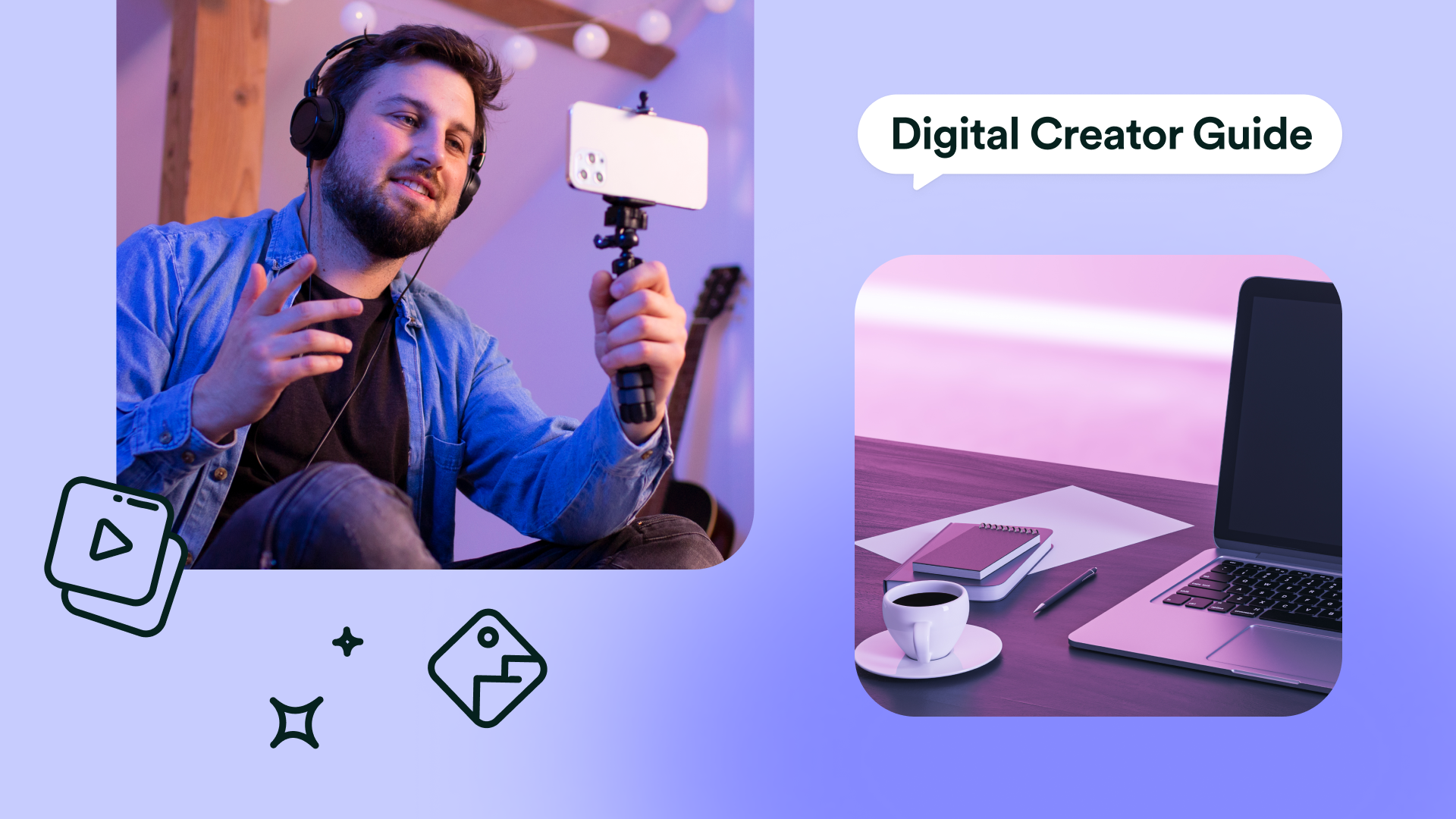The Best Online Business Models for Entrepreneurs in 2025
 Nathan Schenker
Nathan Schenker
Aug 01, 2025

Starting an online business is one of the easiest ways to turn your skills or knowledge into reliable income. You don’t need a storefront, a warehouse, or a big team—just a solid idea, a way to deliver it, and the right tools behind you.
But here’s the catch, choosing the wrong business model could leave you stuck, frustrated, or even worse, back at square one. So how do you choose the right path?
In this guide, we’ll break down the five most popular online business models, explore exactly how each one works, reveal their biggest pitfalls, and show you which model consistently creates lasting income, freedom, and growth.
Let’s dive in and help you choose the best choice for your goals and lifestyle.
Memberships
Memberships are, hands down, one of the most powerful business models online.
Imagine waking up at the start of each month knowing exactly how much money you’ll earn, with no guessing and no stress. That’s the power of Memberships.
When someone joins a membership, they’re not just making a one-time purchase. They’re committing to an ongoing relationship with your business. That ongoing relationship builds retention. And retention leads to stable, repeatable revenue.
Unlike other models where people buy and forget, memberships create a virtuous cycle. Members get continuous value, you get predictable revenue… Everyone wins. It's the only model where your customers' success directly correlates with your income stability.
For example, say you charge $40 per month. In your first month, 30 people join, that’s $1,200. In month two, you bring in 30 more, and most of the original group stays. Now you’re earning $2,400. Fast forward a few more months, and you’re looking at $7,000 per month and climbing. That’s the compounding effect of memberships.
You also have full control over what you offer and how you deliver it. Whether it’s content, a community, or a step-by-step transformation, you’re creating something people return to, and something that scales with you.
All you really need is the right platform. That’s where Membership.io comes in. Membership.io is specifically designed with the tools you need to create, deliver, and grow your online community. No patchwork plugins. No course platform workarounds. Just everything you need, all in one place for streamlined growth.
.png?width=1920&height=1080&name=Pricing%20your%20membership%20-%20Image%203%20(1).png)
Courses
Courses are one of the most popular ways to monetize what you know. You package up your expertise, record the lessons, upload the materials, and sell access. For many creators, courses are the first step into the online business world.
You only have to create the content once, and then you can sell it again (and again) without having to trade more time for money. If you’ve got a valuable skill or a transformational process, a course can be an incredible way to help people and get paid for it.
But here’s where things get tricky. Courses are usually one-time purchases, which means your revenue resets every month. To grow, you need to constantly promote, launch, or drive traffic to your funnel. And if someone finishes your course and moves on, you’re starting from scratch with the next person.
That’s why so many course creators eventually turn to memberships. Instead of creating a single transformation, they build an ecosystem of ongoing support, evolving content, and a place where people stick around. Courses can be powerful, but they don’t always give you staying power.
Still, if you’ve got a clear framework or outcome to teach, and you love creating structured content, courses are a solid foundation from which to build. They just work even better when paired with a model that brings people back.
.png?width=1920&height=1080&name=Digital%20course%20names%20article%20-%20Image%202%20(1).png)
E-commerce
E-commerce is the business model most people think of when they imagine making money online. You sell physical products, ship them out, and earn a profit. Whether you’re dropshipping rugs, selling handmade candles, or launching a clothing line, e-commerce lets you build a brand people can touch.
One of the biggest upsides? The scale. Once you find a winning product and dial in your marketing, you can grow fast. There’s also something satisfying about seeing your products in the real world, knowing someone is using, wearing, or gifting what you created.
But it’s not all smooth sailing. With e-commerce comes inventory, fulfillment, returns, packaging, shipping delays, customer service, and the constant pressure to keep your margins in check. And profit can disappear quickly if your costs go up or your ad performance drops.
Another challenge is retention. Most e-commerce customers buy once and move on. So, there's a constant pressure to keep attracting new buyers, which means spending more on ads, constantly testing creatives, and stressing over seasonal ups and downs.
That said, e-commerce can be a great fit if you’re passionate about physical products and willing to play the long game. And if you pair it with a membership, like a monthly subscription box or VIP customer group, you start to solve that retention problem and build stability.
Affiliate Marketing
With affiliate marketing, you recommend someone else’s product, share a link, and if someone buys through that link, you earn a commission. No need to build a product, deal with customers, or handle fulfillment. Just share what you love and get paid when people take action—it's that simple.
It works especially well if you already have an audience. That audience could be a blog, newsletter, or social media following. And when you’re authentic about your recommendations, it can feel natural and helpful for your audience. A good affiliate setup can generate passive income, especially when you’re promoting evergreen products that don’t go out of style.
However, you’re not entirely in control. If the company changes its payout structure, discontinues the product, or shuts down its program entirely, your income disappears. You’re also sending people away from your business, not toward it. That can hurt long-term growth if you don’t have something of your own to offer.
Affiliate marketing can be a great side income or a stepping stone, but it’s hard to build a stable business around it alone. You’re better off using it as part of a bigger system, one where your audience stays connected to you, not just the links you share.

Digital Products
Digital products let you package up what you know, what you’ve made, or what you’ve designed and sell it. Think templates, ebooks, design assets, spreadsheets, meal plans, or guided meditations. There’s no shipping, no storage, and once it’s created, the cost to deliver it is basically zero.
That’s a big deal. You can sell to anyone, anywhere, at any time. If you get your pricing and marketing right, digital products can bring in sales while you sleep. They’re also low-risk to start. You don’t need to invest in inventory, and you can often launch with just an idea and a well-built landing page.
The challenge? Getting attention.
The internet is full of digital products, and unless yours solves a specific problem in a specific way, it can get lost in the crowd. You also face the same issue as courses (one-time sales). Unless you have a large funnel or bundle them into a broader offer, your revenue starts and stops with each transaction.
The best way to make digital products work long term? Offer your templates or resources inside a member portal, where people get continuous access to new content over time. That way, you get the best of both worlds by combining low-effort delivery with high-value retention.
Marketplace Work
If you’ve got a skill, say writing, design, coding, coaching, or photography, you can turn it into an online income by offering freelance or consulting services. It’s one of the fastest ways to start earning. No product to build, no content to record, no inventory to manage. Just you, your calendar, and your ability to solve problems.
Freelancing gives you freedom. You can work from anywhere, set your own rates, and choose the projects that align with your strengths. Consulting adds another layer by guiding businesses with your expertise, helping them avoid mistakes or move faster. If you’re experienced in a niche, it can be highly lucrative.
But both come with limits. Your income is tied to your time, and there are only so many hours in a day. It’s also easy to burn out when you’re juggling clients, deadlines, and scope creep. You’re constantly selling yourself, and if you stop working, the money stops, too.
Final Thoughts
Every online business model has its place. Courses help you share what you know. E-commerce lets you build a brand. Affiliate marketing earns you income without owning a product. Digital products scale quickly, and freelancing gives you fast cash and location freedom.
Each model has its strengths, but memberships uniquely combine them all. Here’s how:
- Predictable income: Monthly recurring revenue compounds.
- Scalable: Grow without trading more time for money.
- Retain customers: Build relationships, not transactions.
- Flexible: Combine courses, digital products, affiliate strategies, or even physical products within your membership.
Memberships aren’t just another online business model, they’re the ultimate business model.
You can start small, with just a few members. Grow slowly and steadily. Add content, build community, learn your audience's needs, and refine your offer. As more people join and stay, your income grows without doubling your workload. Imagine checking your dashboard every morning to see new members who joined while you slept…
And Membership.io gives you everything you need to make it possible: customizable member areas, AI-powered tools, and automations that save you time and keep people engaged. Whether you’re just starting out or ready to scale, it’s the platform designed to grow with you.
So, if you're thinking about starting an online business, start with a membership and find the freedom, stability, and future you can depend on.


